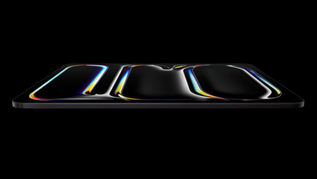Apple launches C1 it's first in house modem for iPhone
- The Apple Square

- Feb 19
- 2 min read

Apple has officially entered the cellular modem space with its own in-house solution, the C1 chip, marking a significant shift in its technological independence. By developing its own modem, Apple no longer has to rely on Qualcomm’s chips for 5G connectivity, an industry move that could have major implications for performance, efficiency, and cost control.
The iPhone 16e, Apple’s latest device replacing the iPhone SE, is the first to feature this Apple-designed modem. While the company touts it as the most power-efficient modem ever in an iPhone, the true test lies in real-world usage. Apple’s claim of improved battery life and faster 5G speeds will need to be put to the test by users in varying conditions.
The shift away from Qualcomm chips has been in the works for years. Apple’s past reliance on third-party modems had its challenges, with the company previously sourcing components from both Intel and Qualcomm. However, performance comparisons often favored Qualcomm, leading Apple to eventually acquire Intel’s modem business in 2019 to develop its own solution. The C1 chip represents the culmination of that investment, allowing Apple to optimize 5G performance with its custom silicon, potentially leading to seamless integration with iOS and Apple’s A-series processors.
Interestingly, Apple is taking a cautious approach with the C1 modem by debuting it in the iPhone 16e rather than its flagship models. The iPhone 16 and iPhone 16 Pro still rely on Qualcomm chips, suggesting Apple wants to evaluate the real-world performance of its modem before committing it to its high-end lineup. This strategy gives Apple time to fine-tune its technology before a broader rollout, potentially in the iPhone 17 series or beyond.
The move to an in-house modem is part of Apple’s broader strategy to control as much of its hardware and software ecosystem as possible. By designing its own chips, displays, and now cellular modems, Apple reduces its dependence on outside suppliers and ensures deeper integration across its products. If the C1 proves successful, future iPhones may rely entirely on Apple’s proprietary connectivity technology, eliminating third-party modem providers altogether.
While Apple’s ambition to take full control of its modem technology is clear, the success of the C1 chip will ultimately be determined by its ability to match or surpass Qualcomm’s performance. If it delivers on Apple’s promises of power efficiency, fast connectivity, and reliability, this could be another step in Apple’s ongoing quest for complete vertical integration of its devices. For now, the C1 modem is a stepping stone into a future where Apple calls all the shots in iPhone connectivity.






